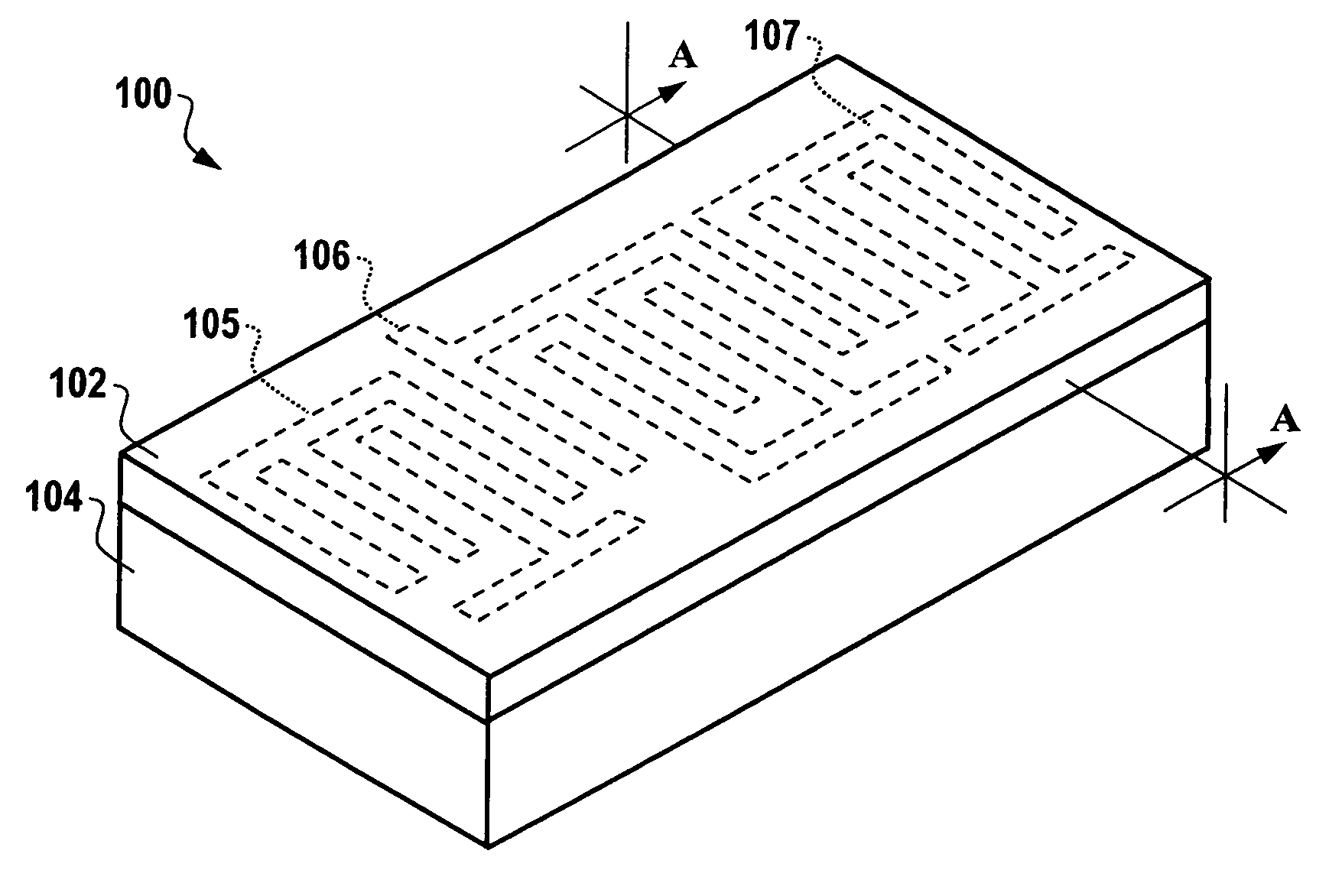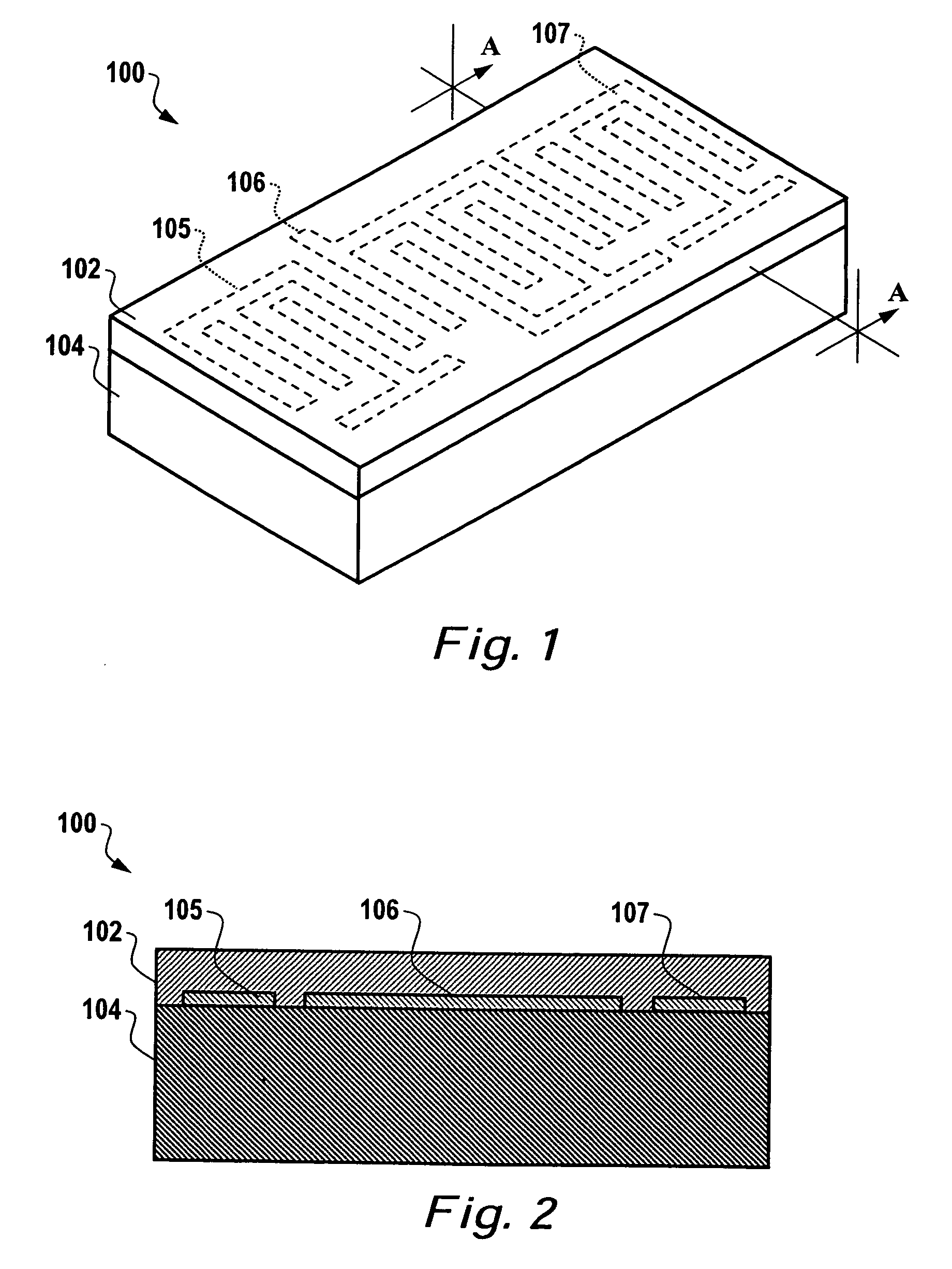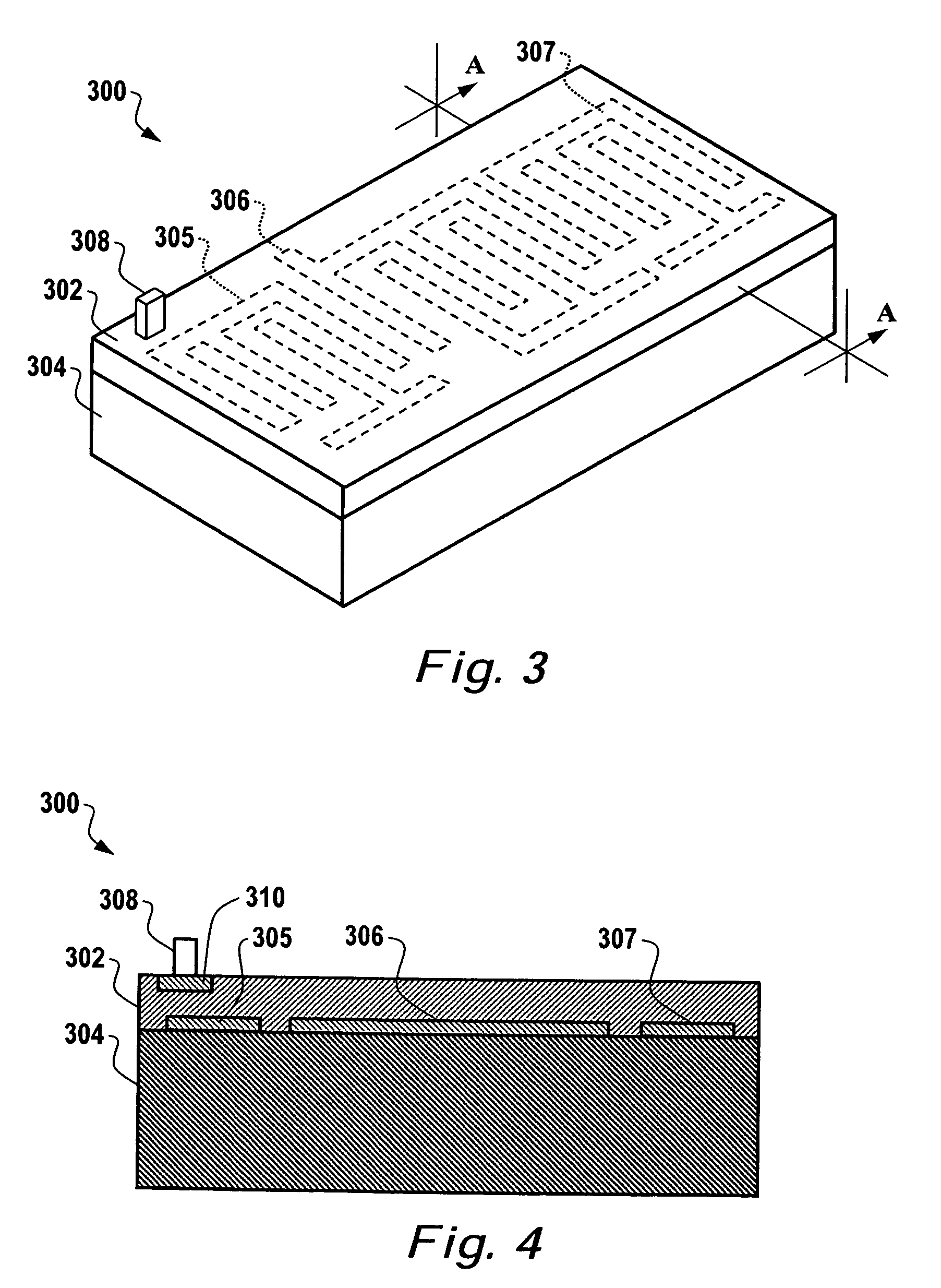Wireless and passive acoustic wave rotation rate sensor
- Summary
- Abstract
- Description
- Claims
- Application Information
AI Technical Summary
Benefits of technology
Problems solved by technology
Method used
Image
Examples
Embodiment Construction
[0025] The particular values and configurations discussed in these non-limiting examples can be varied and are cited merely to illustrate at least one embodiment and are not intended to limit the scope thereof.
[0026]FIG. 1 illustrates a perspective view of an acoustic wave device 100, which can be implemented in accordance with one embodiment. Acoustic wave device 100 generally includes one or more interdigital transducers (IDT) 105, 106, 107, which can be formed on a substrate 104, which may be formed from an elastic substrate material. Substrate 104 is preferably formed from a piezoelectric material. The acoustic wave device 100 can be implemented in the context of a sensor chip. Interdigital transducers 105, 106, 107 can be configured in the form of electrodes or resonators, depending upon design considerations.
[0027] Note that the acoustic wave device 100 represents only one type of acoustic wave device that can be adapted for use with the embodiments disclosed herein. It can ...
PUM
 Login to View More
Login to View More Abstract
Description
Claims
Application Information
 Login to View More
Login to View More - R&D
- Intellectual Property
- Life Sciences
- Materials
- Tech Scout
- Unparalleled Data Quality
- Higher Quality Content
- 60% Fewer Hallucinations
Browse by: Latest US Patents, China's latest patents, Technical Efficacy Thesaurus, Application Domain, Technology Topic, Popular Technical Reports.
© 2025 PatSnap. All rights reserved.Legal|Privacy policy|Modern Slavery Act Transparency Statement|Sitemap|About US| Contact US: help@patsnap.com



